Introduction: Embracing Hydroponic Chamomile Indoors
Welcome to the world of hydroponic chamomile cultivation. In this detailed guide, we'll embark on a journey to explore the intricacies of growing chamomile hydroponic gardening indoors. Famed for its soothing properties and delightful aroma, chamomile has long been a cherished herb in gardens worldwide.
However, by leveraging the power of hydroponics, you can cultivate this wonderful plant indoors, regardless of the season or outdoor conditions. Hydroponics, a method of growing plants without soil, uses nutrient-rich water to nourish plants directly, offering faster growth rates and higher yields.
Whether you're a seasoned gardener looking to expand your repertoire or a beginner fascinated by the idea of soil-less gardening, this guide is designed to provide you with a comprehensive understanding of how to successfully grow hydroponic chamomile. Let's dive into this exciting and rewarding endeavor!
List of materials for growing chamomile hydroponically
- Hydroponic chamomile containers
Choose an opaque container: to avoid direct light to the nutrient solution, thus reducing the possibility of algae growth. Black or dark-colored plastic containers are a good choice.
Container size: choose the right size of the container according to the number and size of chamomile you plan to grow.
Make sure the container is deep enough for the plant roots to grow freely.
- Hydroponic chamomile medium
Rockwool blocks: suitable for hydroponics, help to retain moisture and aeration.
Clay pellets or vermiculite: used to support plants and ensure root aeration.
- Hydroponic chamomile nutrient solution
Specialized hydroponic nutrient solution: contains all the essential trace elements required for chamomile growth.
- Chamomile seeds or chamomile seedlings
Chamomile seeds: Choose high-quality seeds to ensure a good germination rate.
Alternatively, you can choose chamomile seedlings that have already germinated.
- Lighting
LED grow light: provides suitable light to promote healthy growth of chamomile.
- Water quality testing tools
pH tester and EC (Electrical Conductivity) meter: monitor the hydroponic solution's pH and nutrient salt concentration.
- Other tools
Scissors: for pruning plants.
Timer: to control light and possible automatic irrigation system.
For the exact hydroponic method and the principle of establishing a hydroponic system, please read my previous articles:
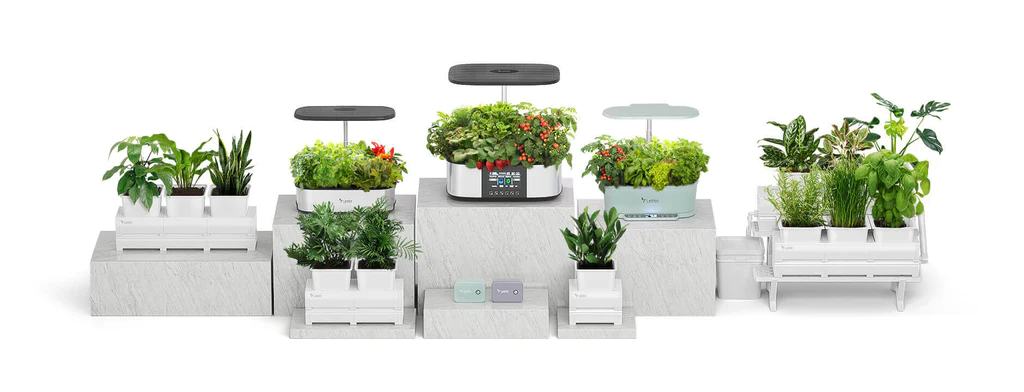
However, I know preparing all of these can be challenging for beginners, and you also need to gain expertise. Luckily, several new innovative hydroponic growing systems are available now, making it easier for you to start your hydroponic gardens.
If you're interested, try the LetPot hydroponic indoor grow systems, which feature innovative automatic watering and nutrition features and app integration. With these features, you can start hydroponics effortlessly, even as a novice gardener.
Learn about LetPot® and customer stories:
Step-by-step guide to growing chamomile hydroponically
Now that we have prepared the required materials, the following will detail the exact steps to grow chamomile hydroponically:
Step 1: Prepare the hydroponic container
Clean the container: make sure the inside of the container is clean and free of impurities.
Fill the nutrient solution: mix the water and hydroponic nutrient solution according to the indicated ratio and pour it into the container.
Step 2: Prepare seeds or seedlings
If using seeds: Spread the seeds evenly over the moist rock wool blocks.
If using seedlings: Gently place the seedlings in the medium, making sure the roots are in contact with the nutrient solution.
Step 3: Setting the light and temperature
Place LED grow lights: Make sure the chamomile gets plenty of light, which takes about 12-16 hours a day.
Maintain the right temperature: Keep the room temperature at 18-22°C.
Step 4: Daily Management
Regularly check the water level: Make sure the water level in the hydroponic container is stable.
Monitor pH and EC value: Regularly test with a EC Meter to maintain a suitable water quality environment.
Observe plant growth: Pay attention to the growth of chamomile and adjust the light and nutrient solution in time.
Step 5: Harvesting and Pruning
Harvest: After chamomile blooms, you can start harvesting the flowers.
Pruning: Regularly prune the aged and wilted parts to promote the growth of new shoots.
Step 6: Cleaning and Maintenance
Clean containers and equipment regularly to prevent pests and diseases.
Replace the nutrient solution: Replace the nutrient solution every few weeks to ensure adequate nutrient content.
Choosing the right hydroponic chamomile variety seed
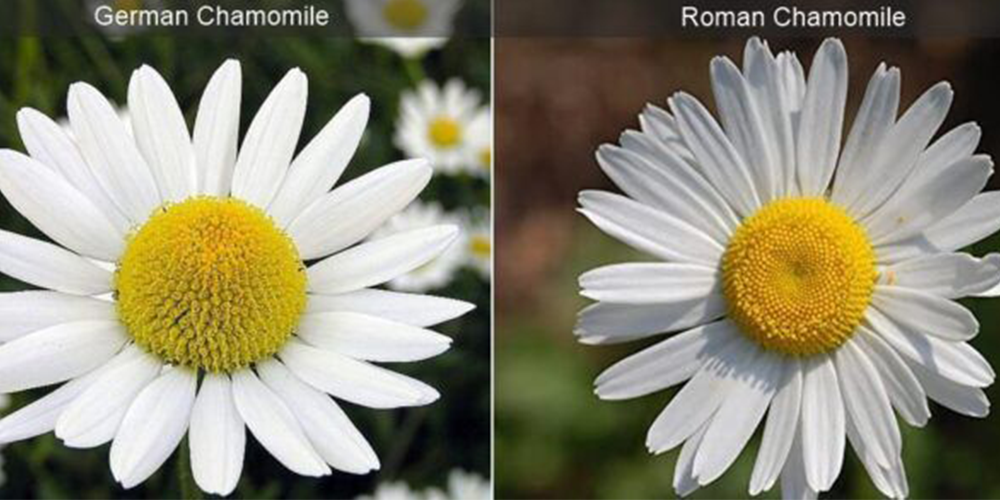
- German chamomile (Matricaria chamomilla)
Characteristics: German chamomile is an annual plant known for its fast growth and strong adaptability. It has small flowers, usually with white petals and yellow centres.
Hydroponic Adaptation: This chamomile is highly adaptable and easy to grow in a hydroponic environment, making it suitable for beginners to try.
Uses: Often used to make aromatic teas and herbal products with soothing and anti-inflammatory effects.
- Roman chamomile (Chamaemelum nobile)
Characteristics: Roman chamomile is a perennial plant with slightly larger flowers than German chamomile and a stronger floral scent.
Hydroponics adaptability: Although the adaptability is not as good as the German chamomile, but in the appropriate hydroponic conditions can also grow well.
Uses: Roman Chamomile is also widely used in herbal medicine and aromatherapy, and its soothing properties are suitable for a wider range of health needs.
Selecting and preparing seeds
When selecting seeds, the following points should be considered:

- Seed quality
Quality seeds: choose a reputable supplier to ensure the quality and purity of the seeds.
Freshness: Fresh seeds have a higher germination rate. Check the production and expiry dates on the packets.
- Seed varieties
Variety selection: Different varieties of chamomile may have different growth habits and flowering periods. Choose a variety that suits your climate and indoor environment.
Organic seeds: If possible, choose organic certified seeds, which can ensure that the planting process is free of harmful chemicals.
- Germination conditions
Germination rate: Pay attention to the germination rate marked on the package and choose seeds with a high germination rate.
Germination temperature: Most chamomile seeds germinate best under warm conditions, generally between 18°C and 22°C.
- Pre-treatment
Soaking seeds: Soaking seeds in water for a few hours before sowing can improve the speed and rate of germination.
Sterilization: a simple sterilization treatment can reduce the number of pathogens carried by the seeds.
Introduction to Growing Media for Hydroponically Grown Chamomile
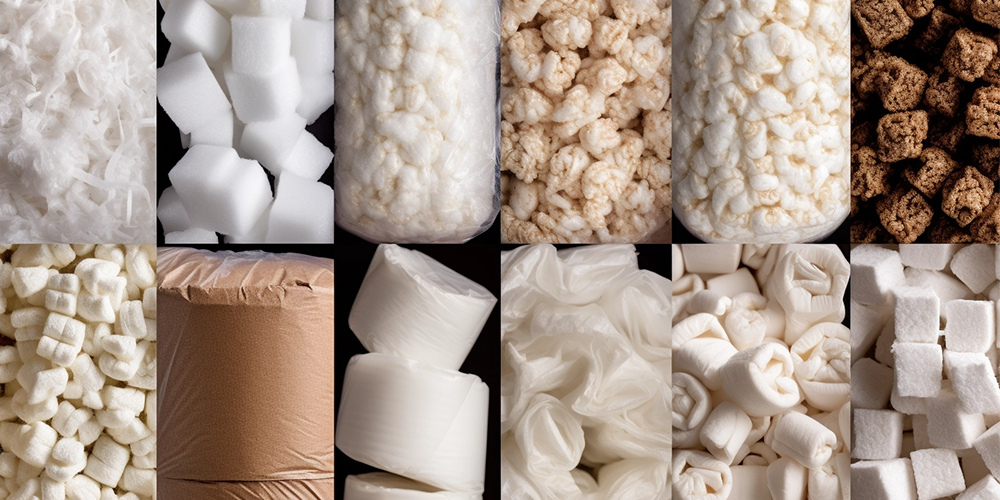
When growing chamomile hydroponically, choosing the right growing medium is very important for the healthy growth of the plant. Below is an overview of several commonly used growing mediums:
- Rockwool
Characteristics: High water retention and air permeability.
Uses: Suitable for seed germination and seedling growth stages.
- Clay granules (LECA)
Characteristics: Good water retention and air circulation.
Uses: Suitable for larger plants to provide stable support.
- Vermiculite
Characteristics: Highly absorbent while maintaining good aeration.
Uses: Suitable for the whole growth cycle, especially during root development.
- Perlite
Characteristics: Excellent air permeability and some water-holding capacity.
Uses: For mature plants that require more air circulation.
- Puffer root (watercress)
Characteristics: Provides an organic growing environment.
Uses: Suitable for natural, organic hydroponics.
Nutrient solution quality, pH, EC, and PPM management for growing chamomile hydroponically
Water Quality
In a hydroponic system, water quality directly affects the health and growth of the plants. For chamomile, using clean, unpolluted water is fundamental. Tap water is usually available, but if it contains high levels of chlorine or other chemicals, it is best to treat it first, such as leaving it to evaporate the chlorine or using a water filter.
pH

pH is a measure of the acidity or alkalinity of an aqueous solution, and for hydroponic chamomile the ideal pH range is usually between 5.5 and 6.5. This range allows the plant to absorb nutrients more efficiently. Regular monitoring with a pH tester and adjustment with a pH adjuster is recommended.
EC Value
The EC value (electrical conductivity) reflects the concentration of nutrient salts in the solution. For chamomile, the appropriate EC value is generally between 1.0 and 1.6 mS/cm (milliSiemens per centimeter.) Too high an EC value may lead to salt accumulation and damage to the plant, while too low an EC value may lead to nutrient deficiencies.
PPM (concentration per million parts)
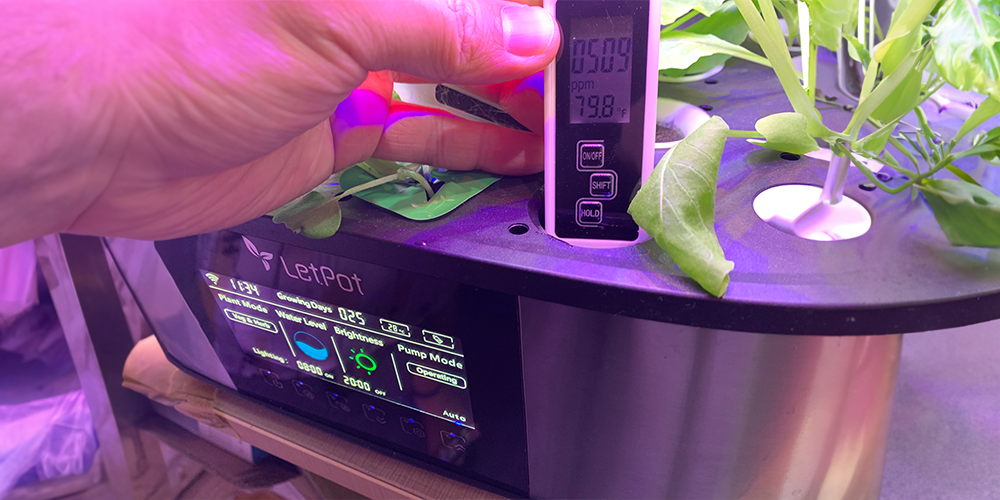
PPM is another measure of nutrient salt content in water and is closely related to EC values. The ideal PPM range for chamomile in a hydroponic system is approximately 560 to 840 PPM (based on a conversion factor of 0.5). Chamomile at different stages of growth have different nutrient salt requirements, so PPM values may need to be adjusted accordingly.
Management Recommendations
Regular testing: Use a pH meter and EC/PPM meter to regularly test the pH and nutrient salt concentration of the aqueous solution.
Timely Adjustment: Adjust the pH value and nutrient concentration according to the test results.
Water Replacement: Replace the water and nutrient solution in the hydroponic system regularly to avoid nutrient imbalance and accumulation of harmful substances.
Lighting for growing chamomile hydroponically
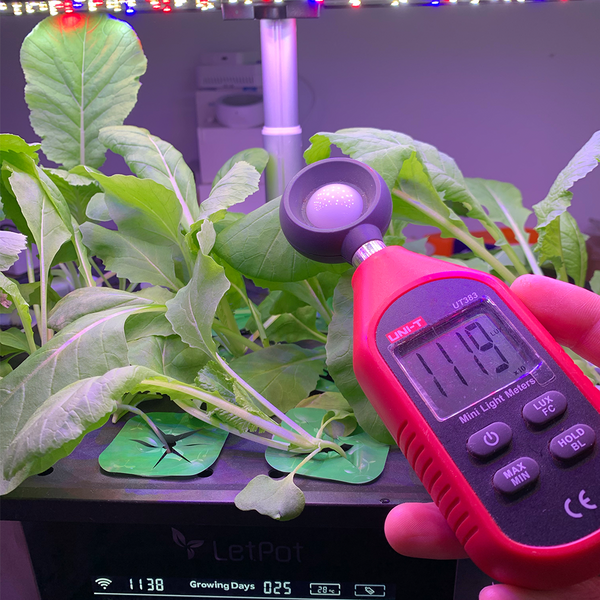
In a hydroponic system, lighting is one of the key factors in ensuring healthy chamomile growth. Here are a few pointers on lighting for hydroponic chamomile:
Light Requirements
Chamomile is a light-loving plant that requires sufficient light for effective photosynthesis. In its natural environment, chamomile typically requires six to eight hours of direct sunlight per day. In an indoor hydroponic system, this needs to be achieved with an artificial light source.
LED Grow Lights
Light intensity: Chamomile requires medium to high-intensity light. Make sure the LED lights provide enough light intensity to mimic the effect of natural sunlight.
Light Duration: 12 to 16 hours of light per day is usually recommended to promote healthy chamomile growth.
Lamp Location
Lamp Height: Position the lamps at a suitable height, usually 20 to 40cm from the top of the plant, to ensure that the plant receives light evenly and avoids burns.
Growing Temperatures for Hydroponically Grown Chamomile
The growing temperature of chamomile has a significant impact on its health and productivity. In a hydroponic system, controlling the right temperature range is key to ensuring good chamomile growth. Below are temperature points to consider when growing chamomile hydroponically:
- Ideal temperature range
Daytime Temperature: The optimum temperature for chamomile to grow in the daytime is usually between 18°C and 24°C.
Night time temperatures: night time temperatures are slightly lower than daytime temperatures, around 15°C to 18°C, helping the plant to rest and recover.
Temperature and humidity are often interrelated, and it is equally important to maintain proper air humidity, avoiding overly dry or humid conditions.
Daily management and maintenance of hydroponically grown chamomile
Hydroponically Chamomile Pruning
Frequency & Timing: Prune your chamomile regularly, especially removing wilted or diseased leaves and flowers to encourage new growth.
Tips: Use sharp, sterilized scissors and carefully cut away unwanted parts to avoid damaging healthy branches and leaves.
Hydroponically Chamomile Plant Spacing
Important: Proper plant spacing ensures adequate air circulation and reduces the incidence of disease.
Adjustment: Adjust the distance between plants at the right time as they grow to avoid overcrowding.
Hydroponically Chamomile Pest control
Monitor: Inspect chamomile regularly for signs of pests, such as eggs or gnawing marks on the leaves.
Natural methods: Use natural methods such as introducing beneficial insects or applying organic insecticides.
Prompt treatment: Take immediate steps to treat the infestation as soon as it is detected to avoid spreading.
Hydroponically Chamomile Disease Control
Prevention: Maintain good ventilation and suitable humidity and avoid over-wet environments to prevent fungal and bacterial diseases.
Recognition and treatment: Learn to recognize common disease symptoms, such as leaf spot or wilt, and treat them with appropriate methods, such as organic fungicides, as soon as they are found.
Frequently Asked Questions about Growing Chamomile Hydroponically
Q1: How often should I change the nutrient solution in my Chamomile hydroponic system?
A: It is generally recommended to change the nutrient solution every two to three weeks, or when a water test shows a nutrient imbalance.
Q2: Why does root rot occur in hydroponic chamomile?
A: Root rot is usually caused by over-wet conditions or poor air circulation. Ensuring proper air circulation and a suitable hydroponic medium can prevent this problem.
Q3: What is the best light duration for hydroponic chamomile?
A: The optimal light time for chamomile is 12 to 16 hours per day. Using a timer to control the light can help maintain a consistent light period.
Q4: How can I improve the flowering rate of hydroponic chamomile?
A: Ensuring adequate light, suitable temperature, proper nutrient solution ratio, and timely pruning will help to increase the flowering rate.
Q5: Does hydroponic chamomile need a special nutrient solution formula?
A: Chamomile does not require a special nutrient solution formula, but it is important to ensure that you use a general-purpose hydroponic nutrient solution that is suitable for its growth stage.
Conclusion
Growing chamomile hydroponically is both a fun and productive process. By precisely controlling environmental conditions such as water quality, pH, EC, lighting, and temperature, you can effectively promote healthy chamomile growth. Routine management and maintenance, including timely pruning, maintaining proper plant spacing, and controlling pests and diseases, are essential to maintaining chamomile in a healthy state. In addition, paying attention to common problems and taking appropriate measures to solve them can further improve the success rate of hydroponic chamomile. Overall, hydroponic chamomile not only offers gardening enthusiasts a novel way to grow chamomile but also brings satisfaction and beautiful flowers.
Other Plant Hydroponic Growing Tips
If you are also interested in other hydroponic plants, please read related articles.
- How to grow hydroponic kale: A Beginner’s Guide
- How to Grow Lettuce Indoors Hydroponically: A Detailed Guide
- How to grow thyme hydroponically: A Comprehensive Guide
- How to grow rosemary hydroponically: A Comprehensive Guide
- How to grow cilantro hydroponically indoors: A Beginner’s Guide
- How To Grow Spinach Indoors Hydroponically: Growing Tips
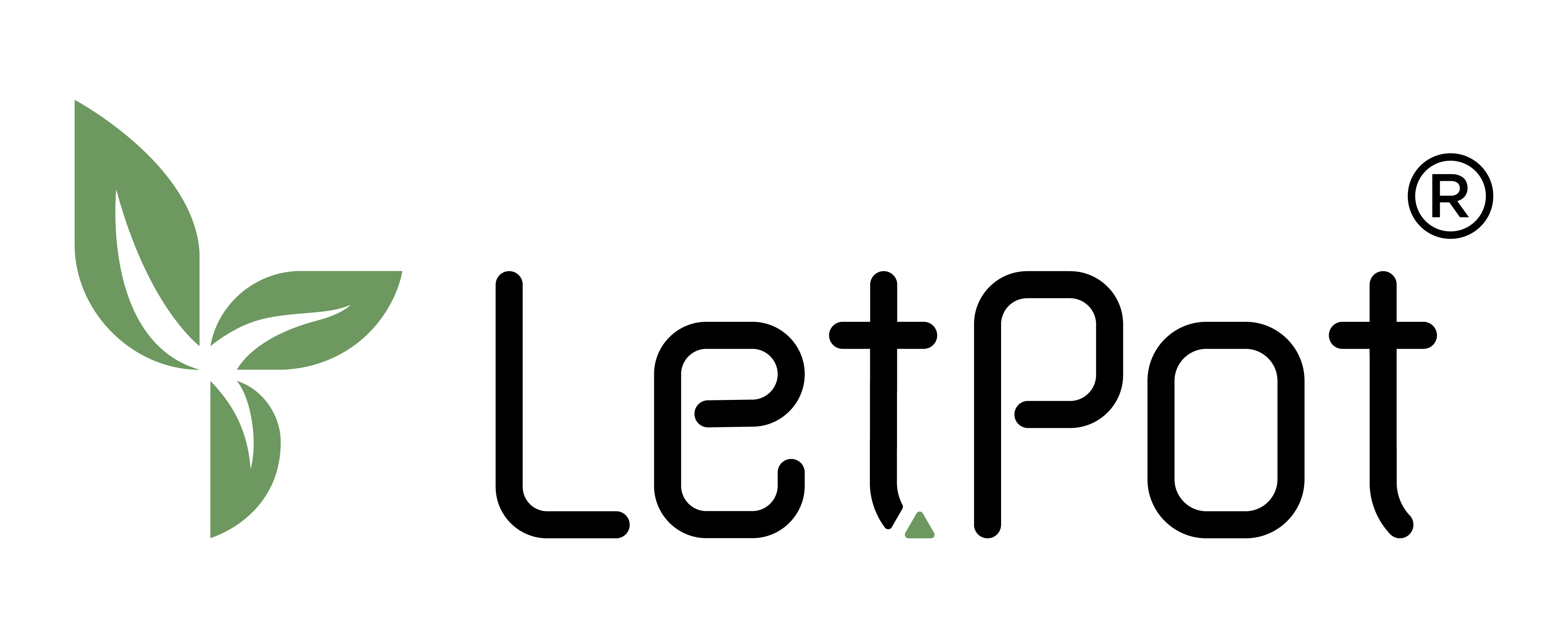

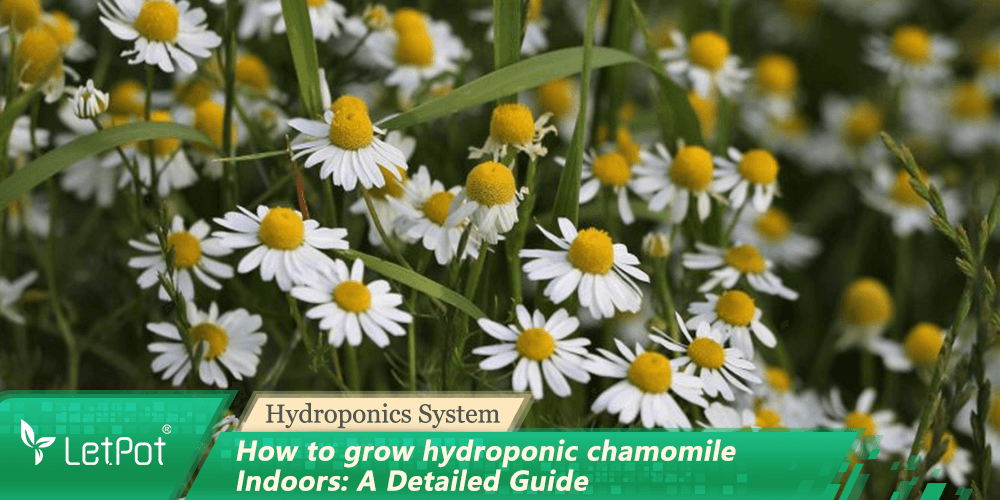
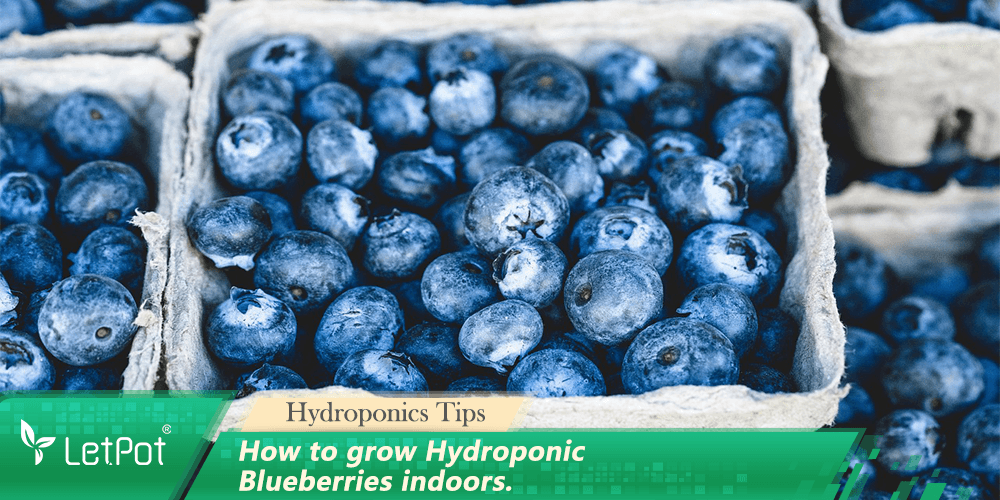
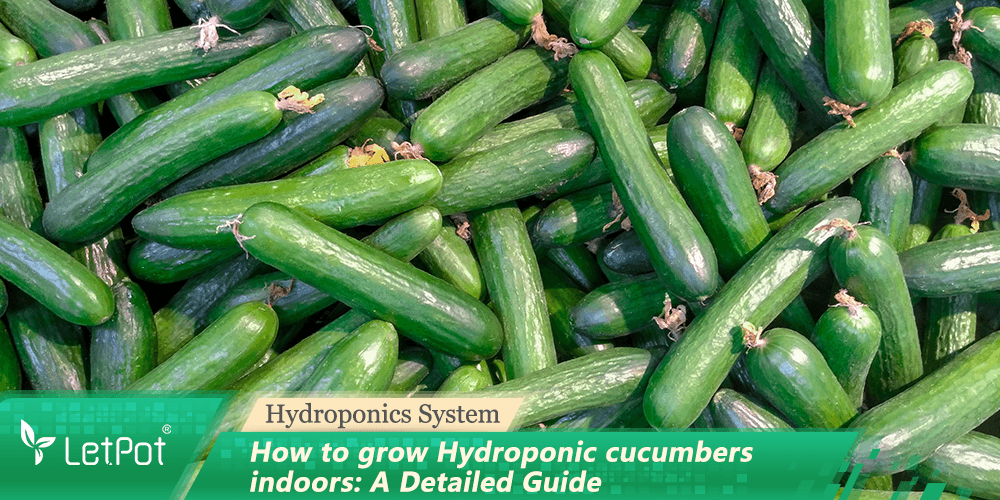
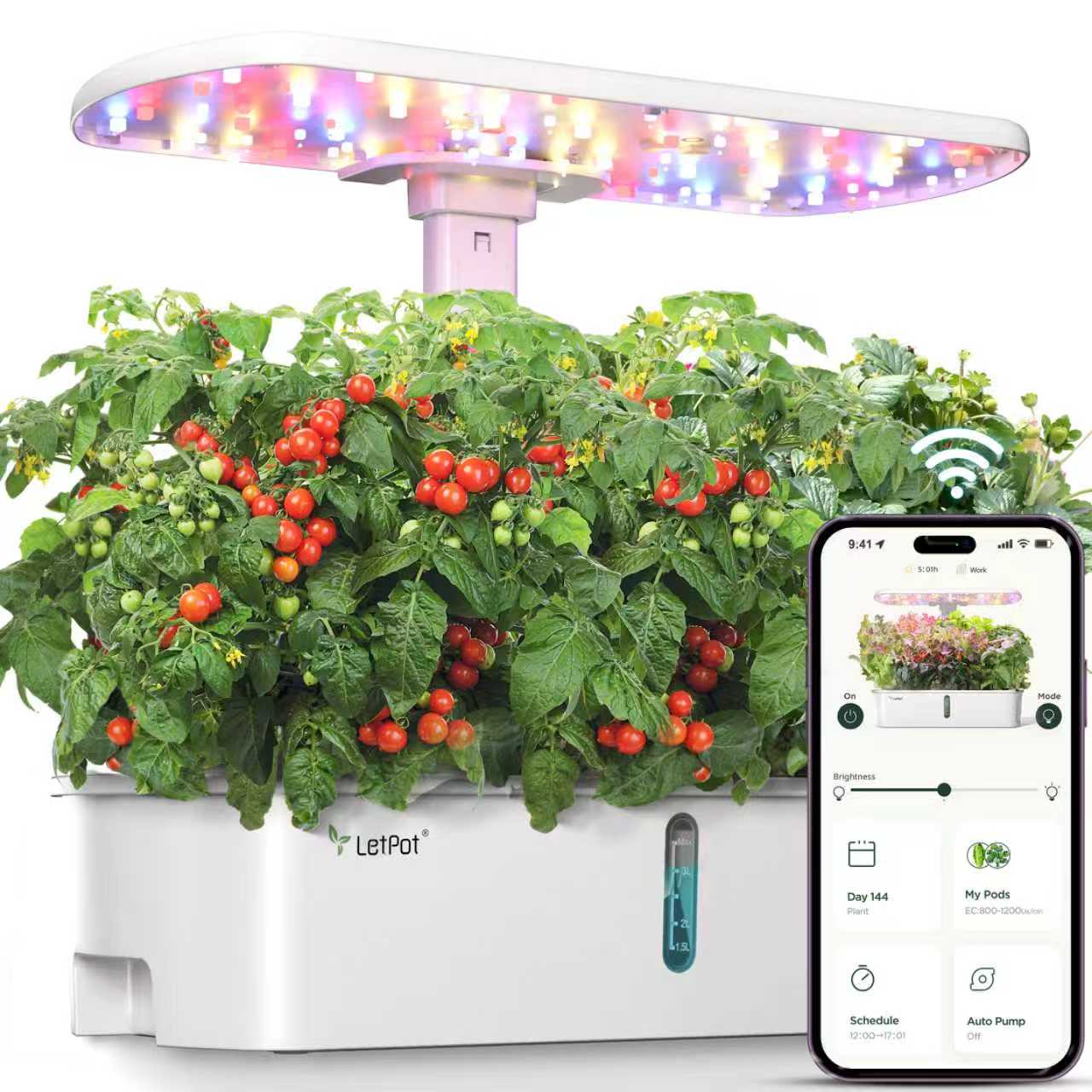
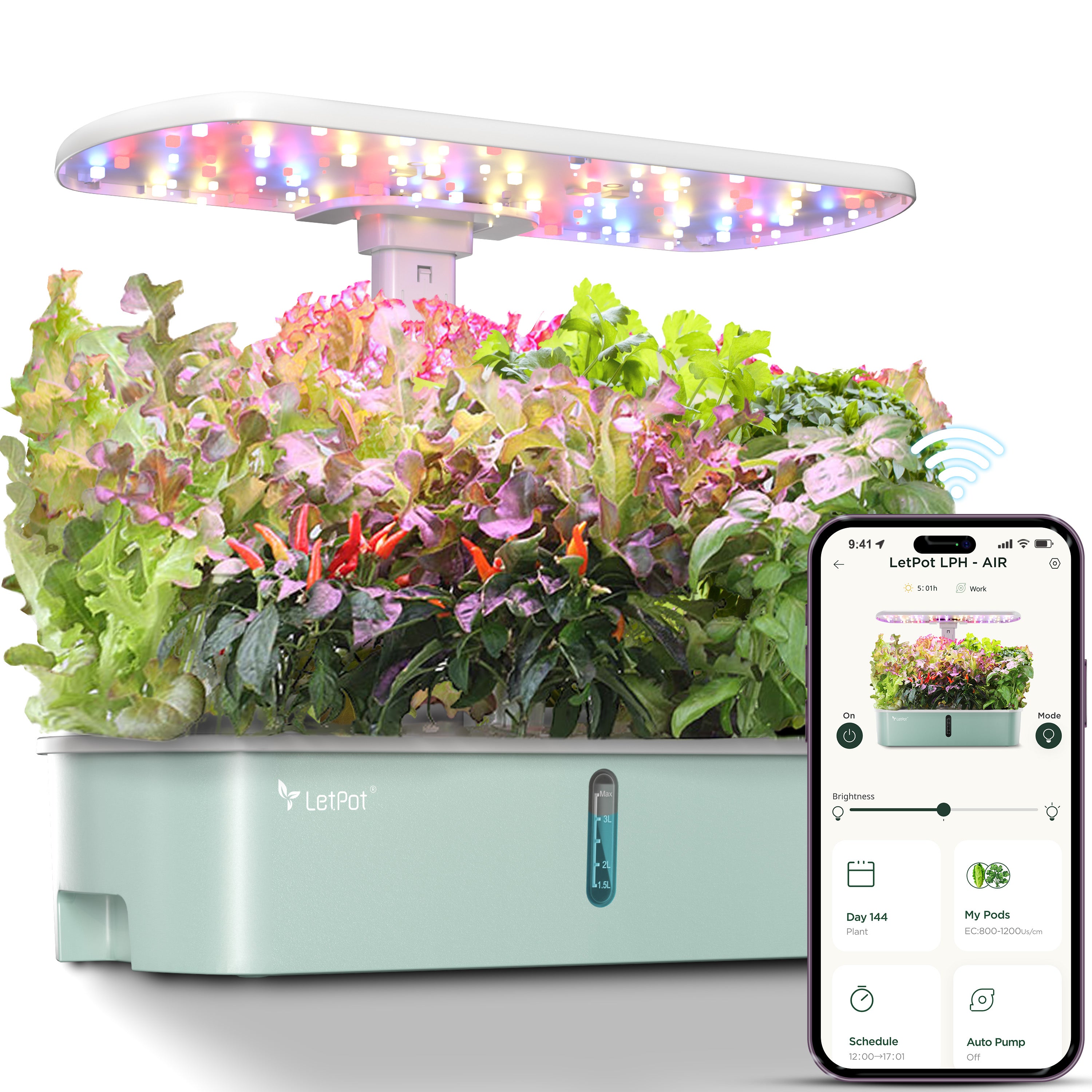
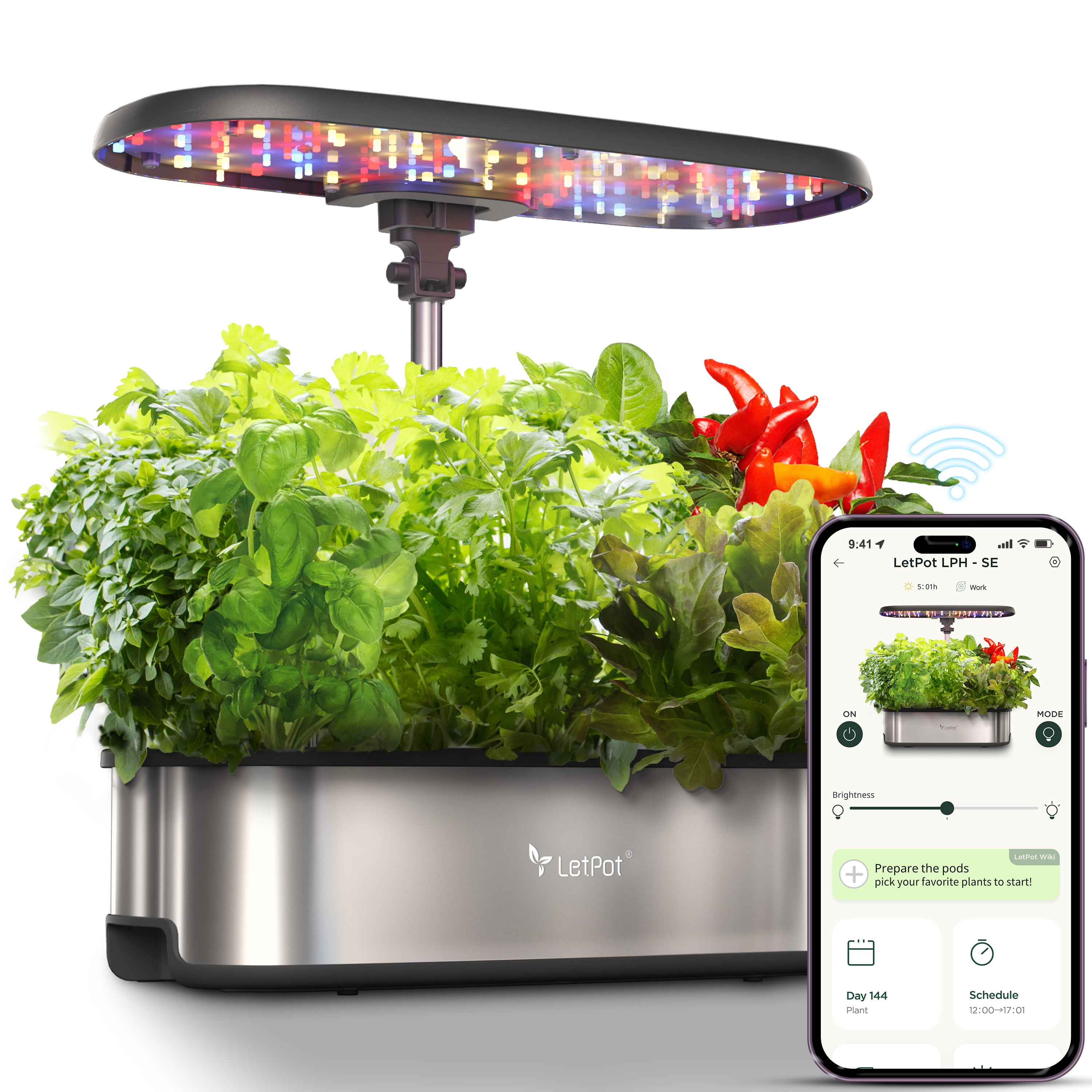
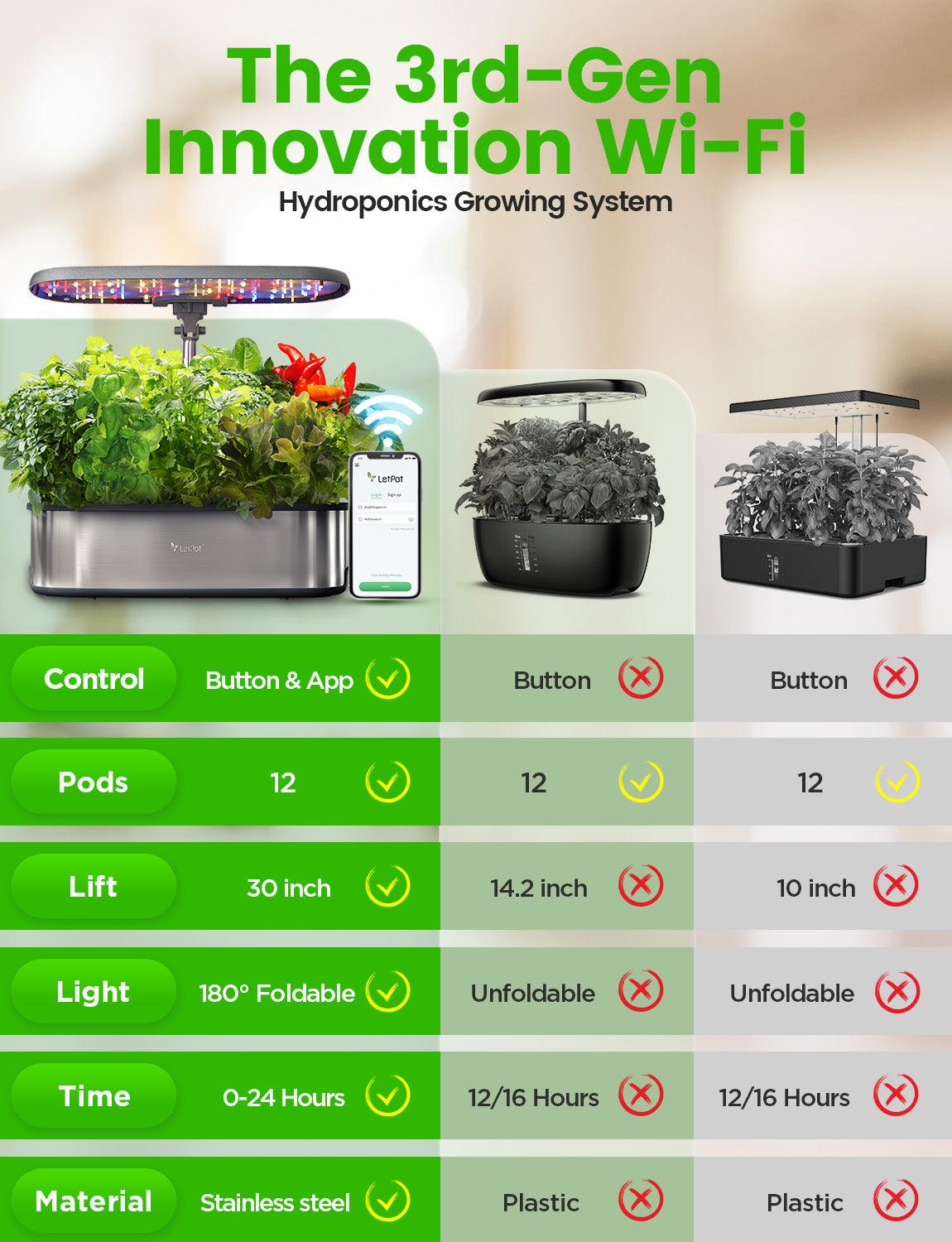
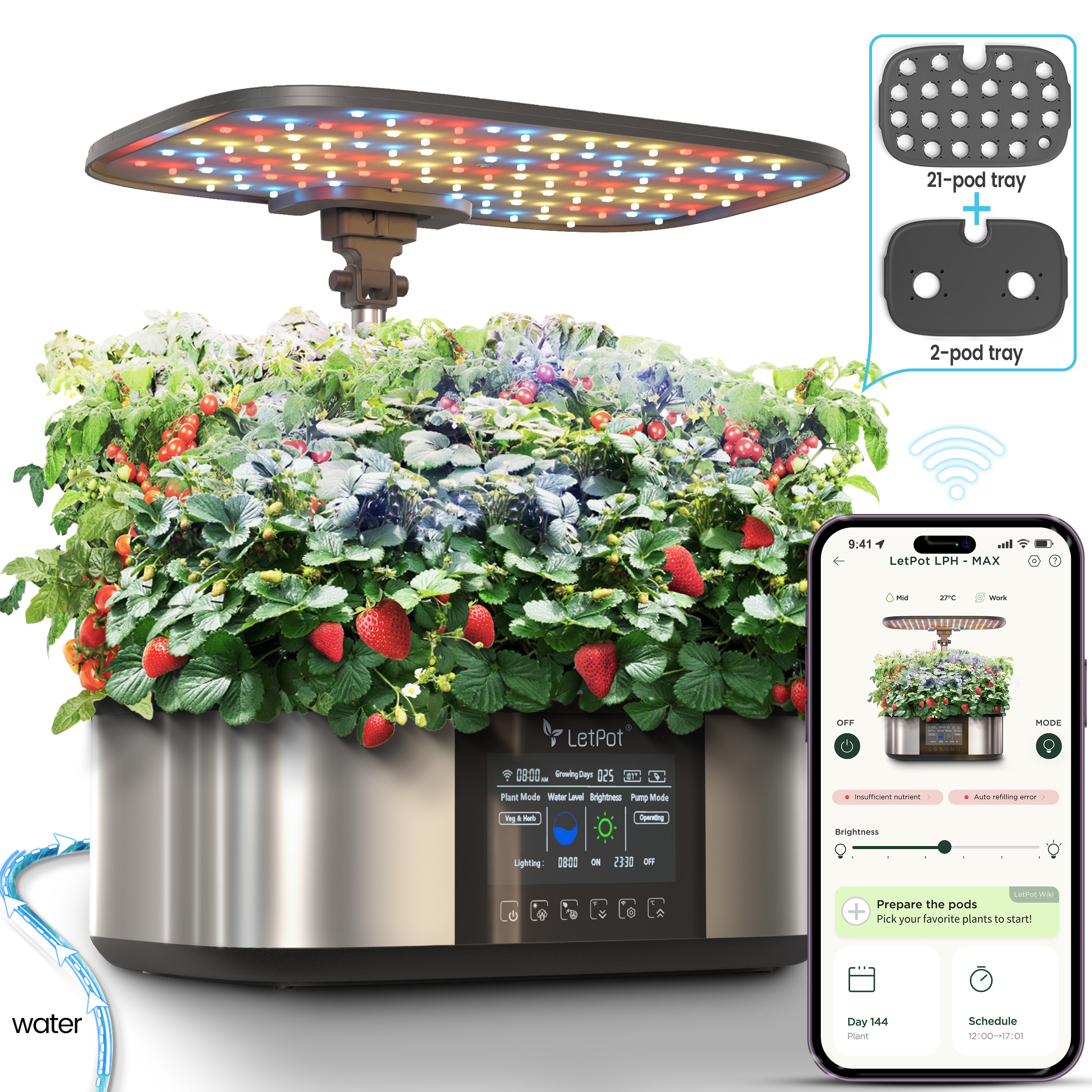
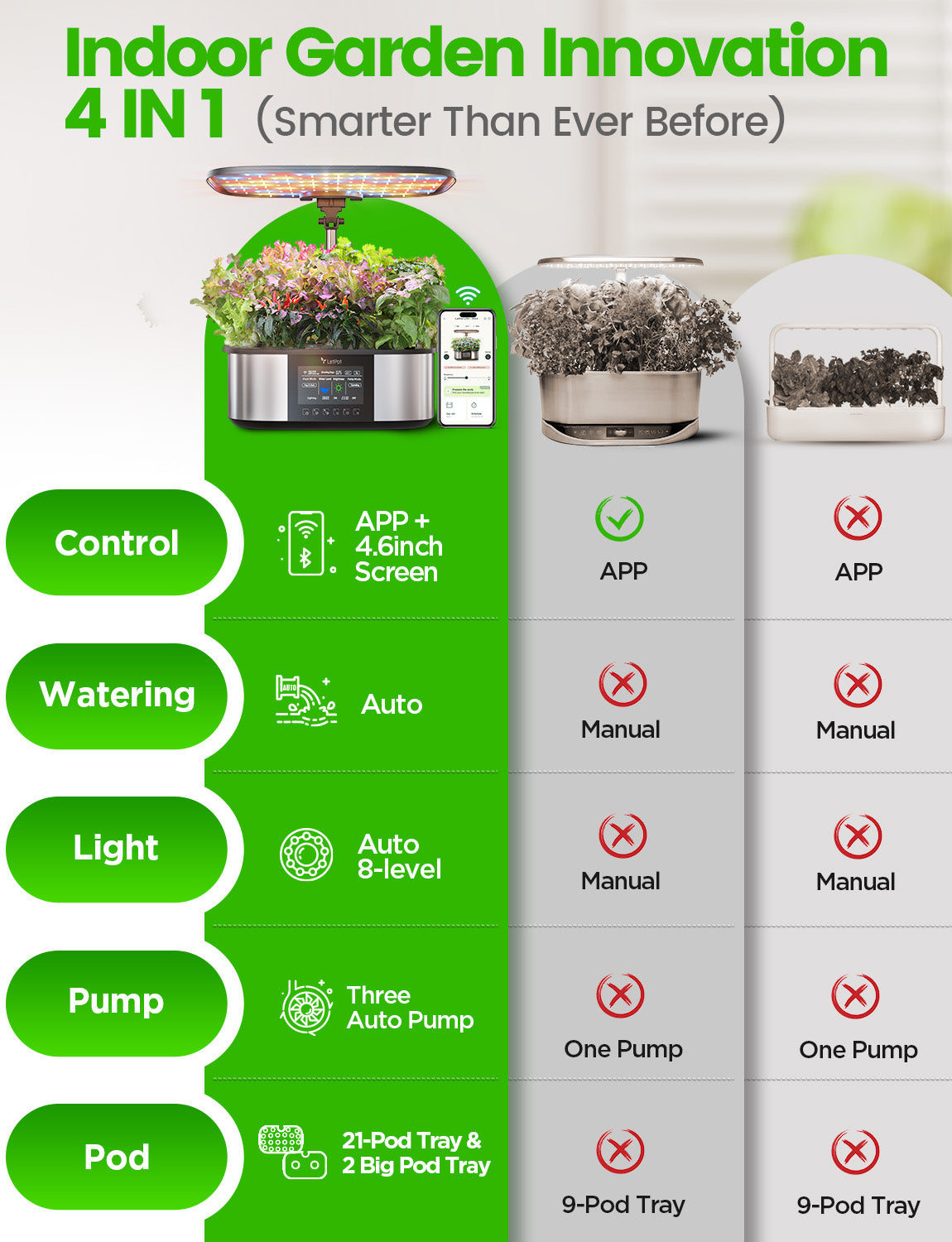
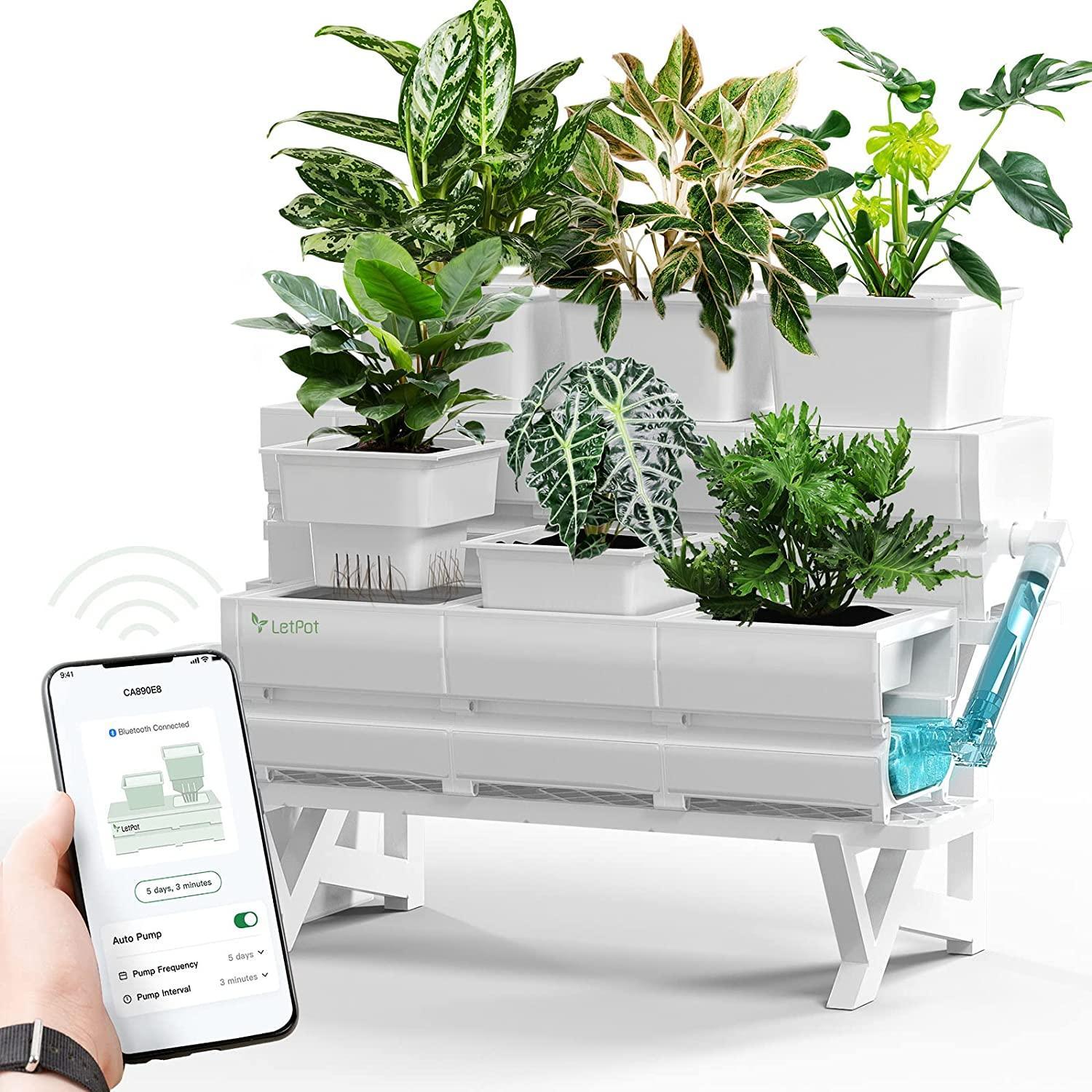
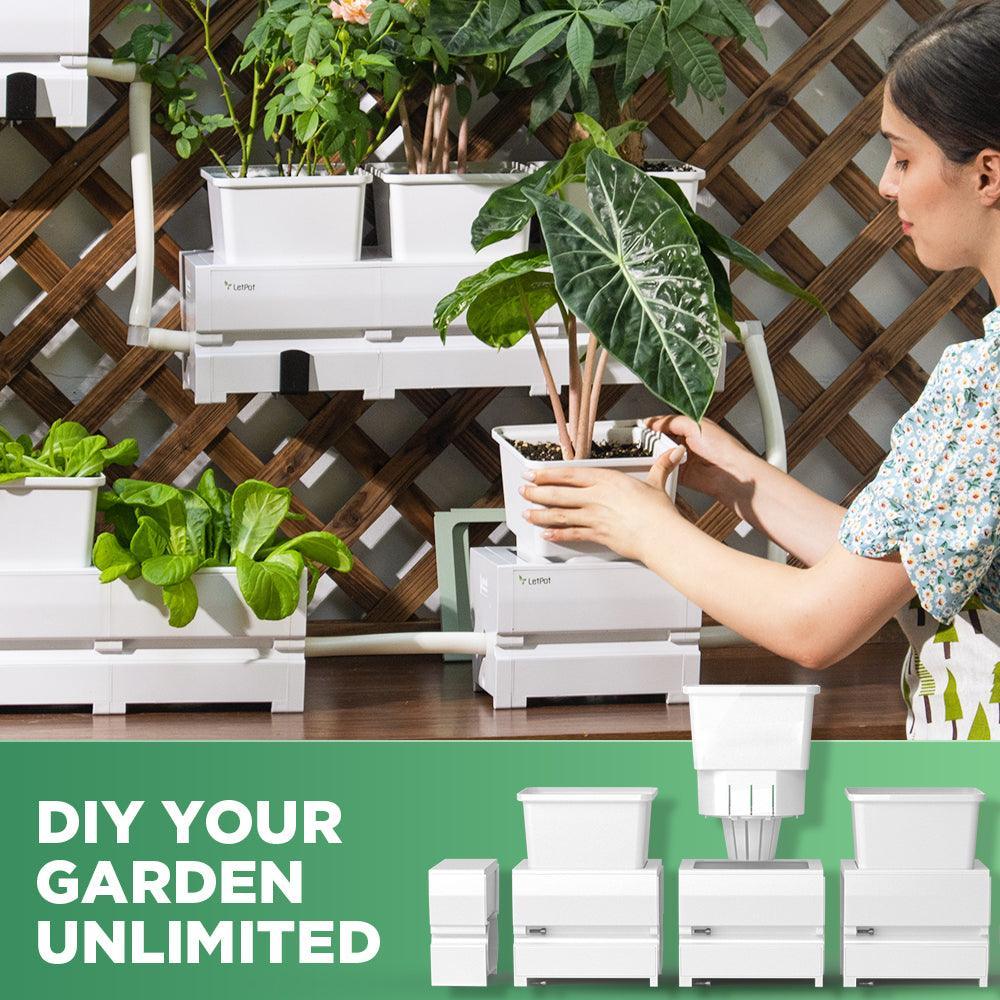
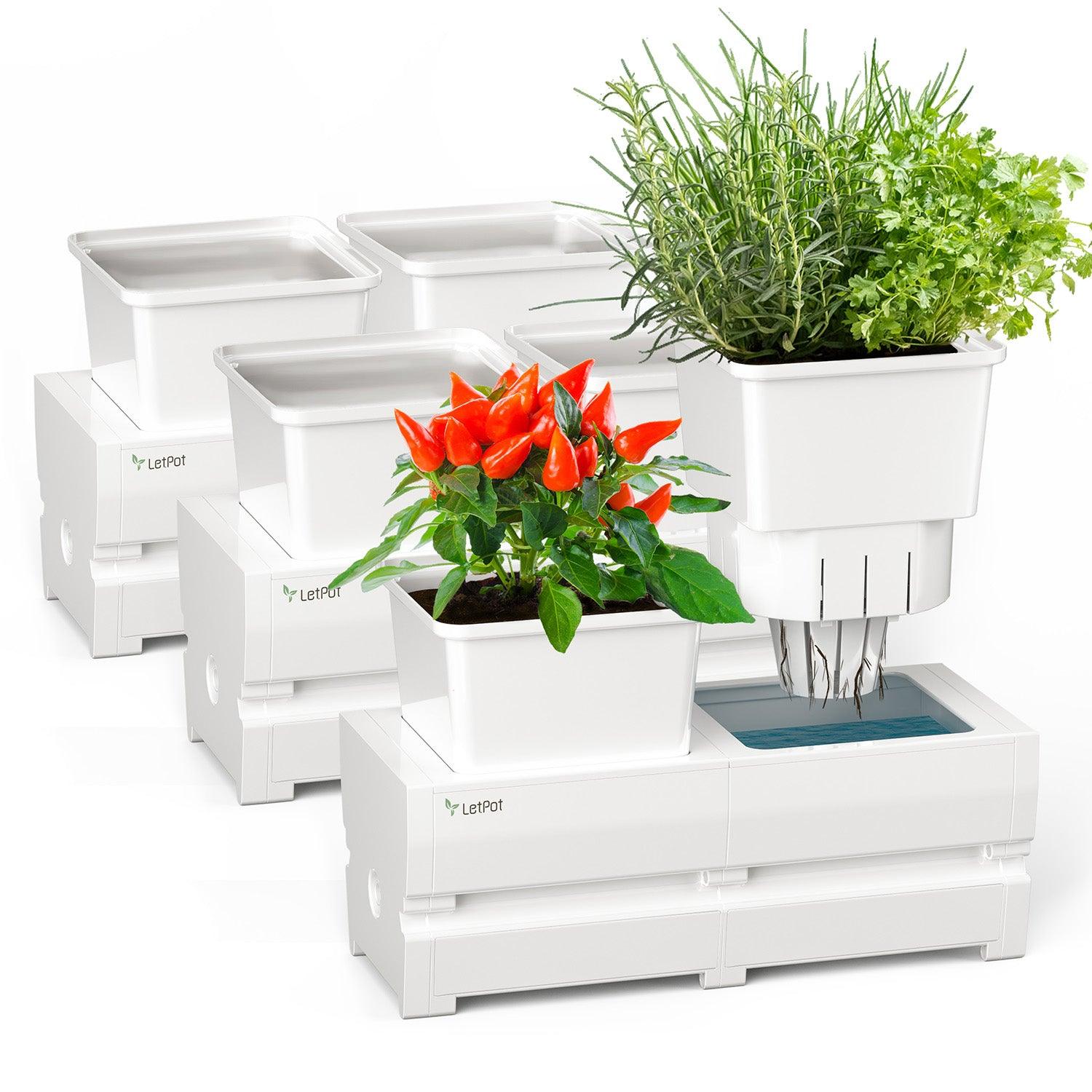


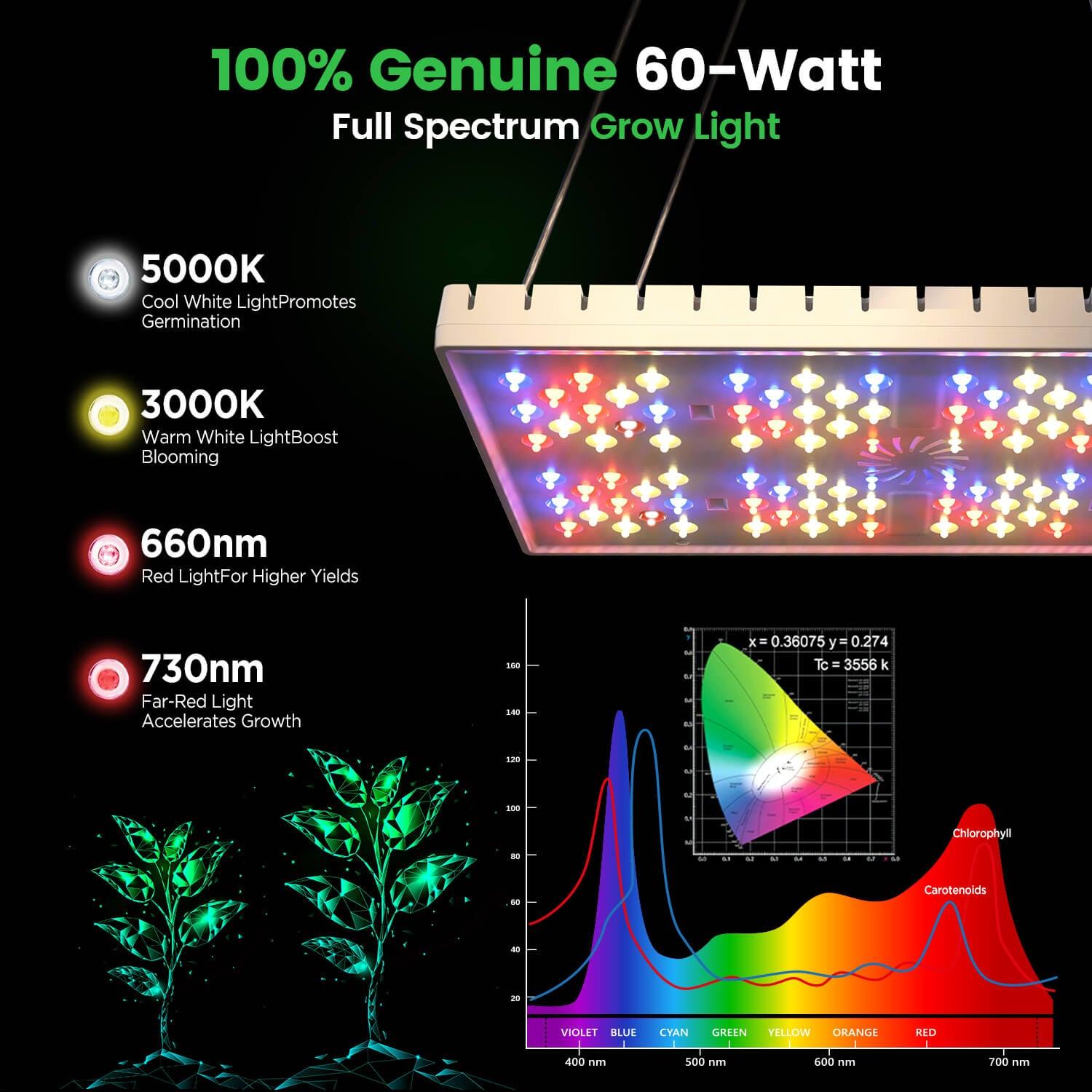
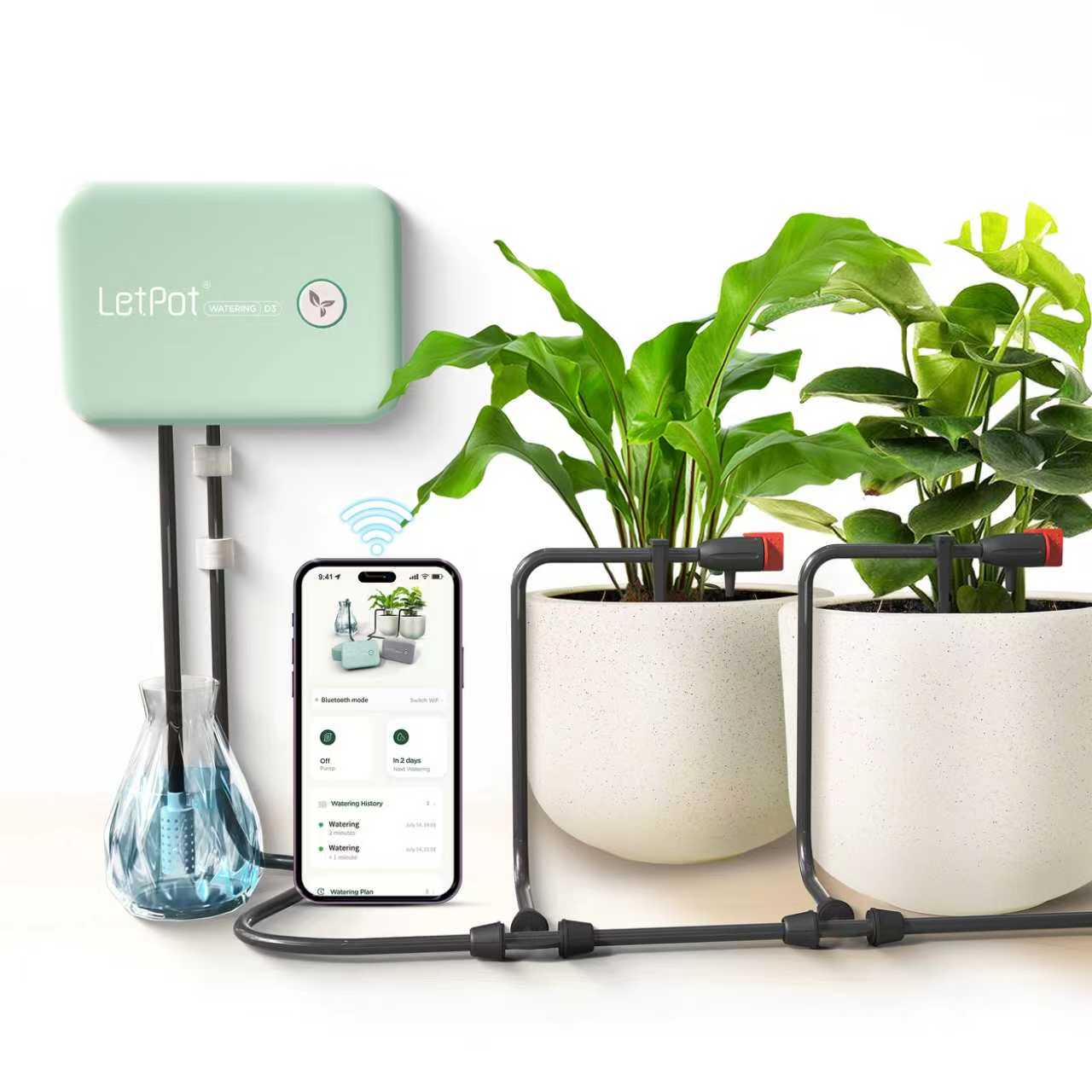

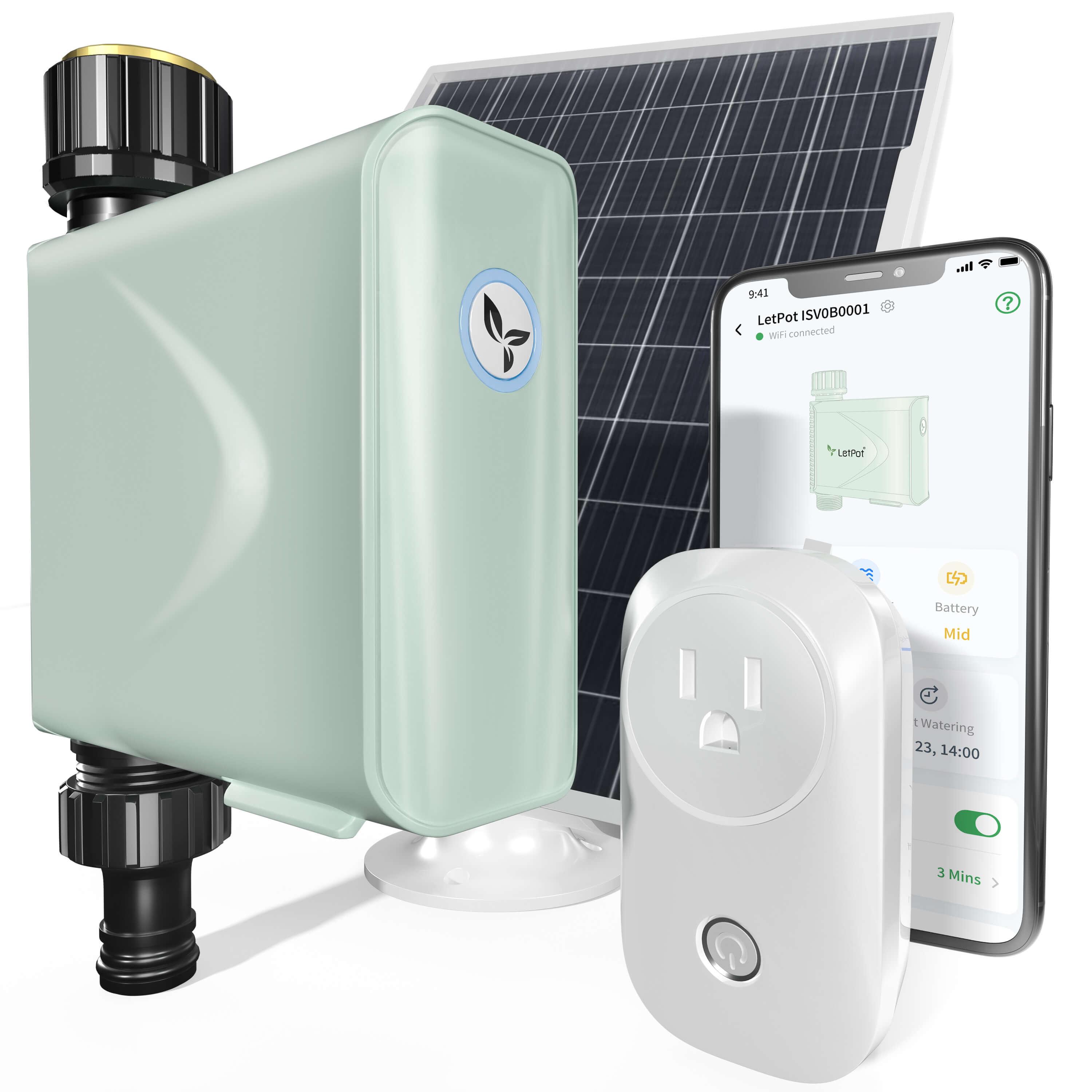
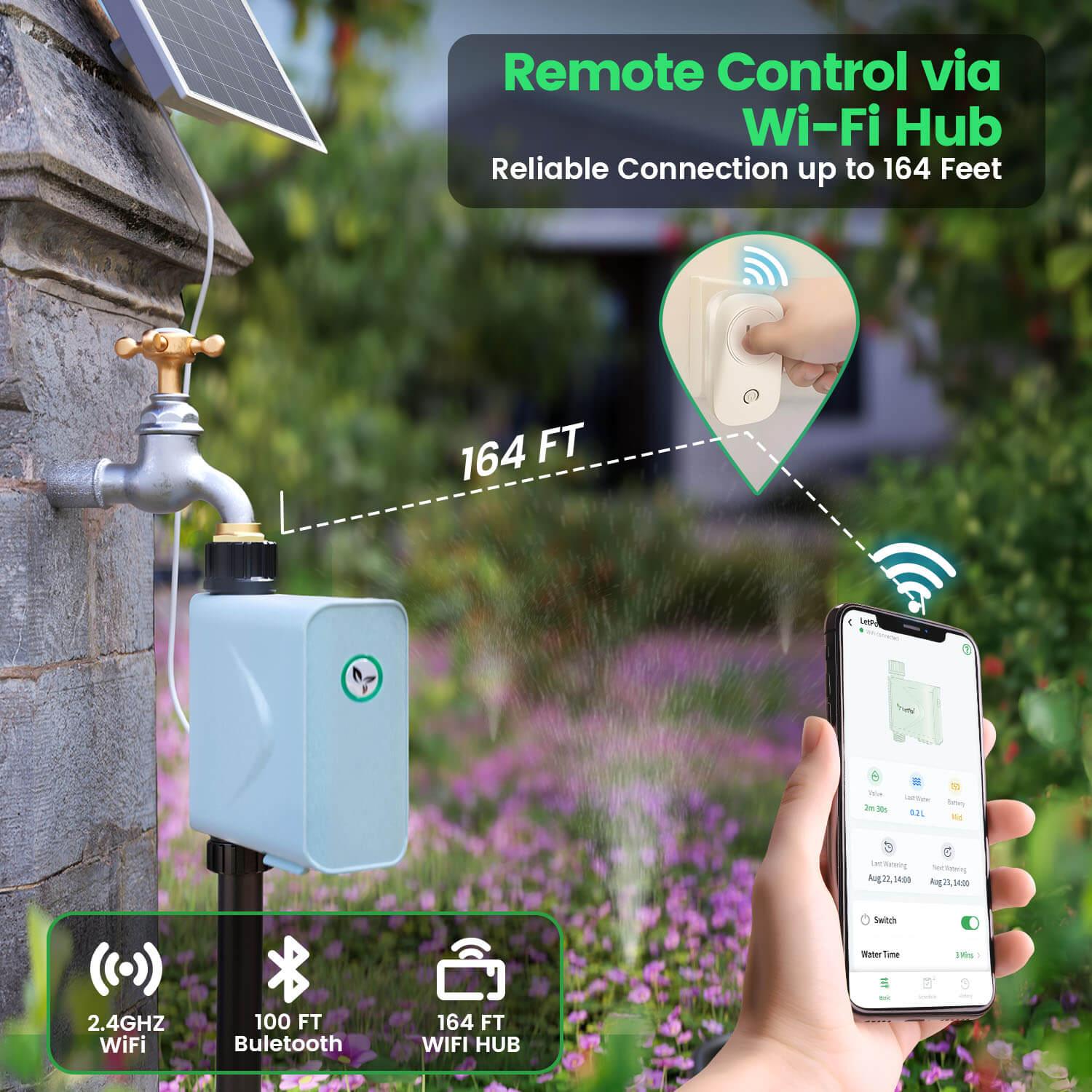

Leave a comment
All comments are moderated before being published.
This site is protected by hCaptcha and the hCaptcha Privacy Policy and Terms of Service apply.